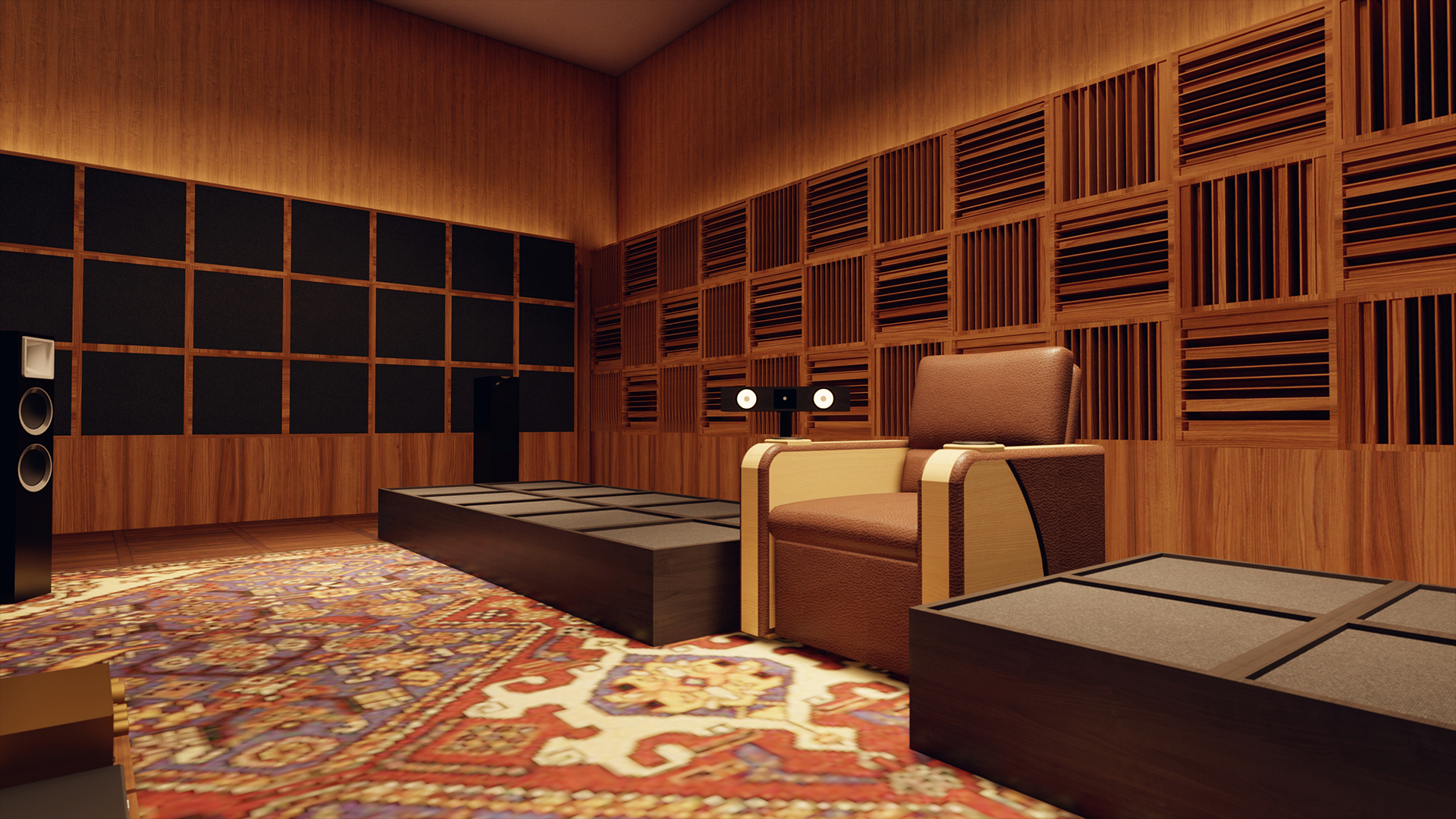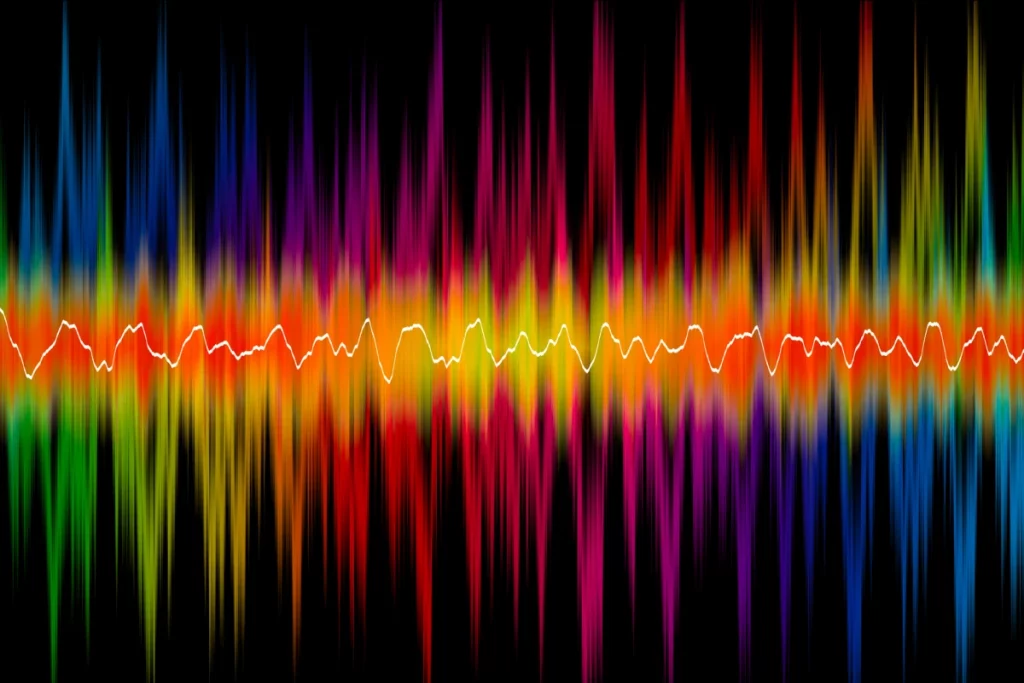
Our critical listening rooms must fall into three main categories. First, we have the hobbyist or amatuer. Their room treatment goal is reverberation time management. They are interested in managing the reflections within their rooms, not the low end. They lack the budget and the space requirements to treat the low-frequency issues within their room. Their goal is speech intelligibility not unwanted room modal pressure issues produced by the small room size and volume. Our second room type is semi-professional. A semi pro room is a room that is used for generating income around 50% of the time. The other half of the time the room is used just for listening to music. The semi pro room engineer knows the room produces low-frequency energy issues that must be treated. The semi-pro room goes after as many of those issues as possible within the given space requirements and extent of the budget with a goal of achieving at least a 70% solution of all frequency issues.. The professional room requires at least an 80% solution to all low, middle, and high frequency issues present within the room. Pro rooms can be existing rooms or new builds. Hobbyist and semi-pro rooms are almost always existing room retrofits. We can even go one more room farther by looking at a mastering room. A room designed for mastering must have at least a 90% solution to all frequency issues.
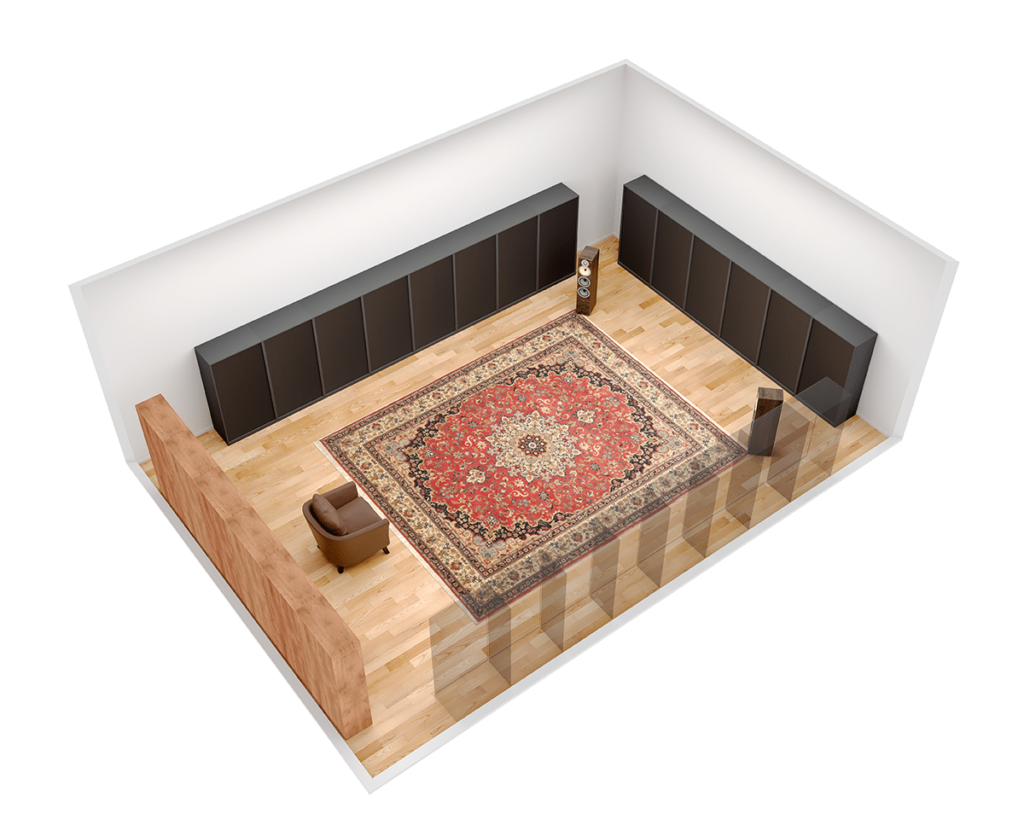
We have three usages to discuss today. We will first look at a two channel listening room. In this set up, we have two speakers and a listening position. Our acoustic goal is to manage the low-frequency pressure issues at a minimum on the front and both sidewalls. In a perfect world, we would manage low-frequency issues on all wall surface areas to be able to manage 80% of the most critical frequency issues. https://en.wikipedia.org/wiki/Longitudinal_mode Treating issues with absorption is best done using a broadband approach. Our ACDA series of units have two frequency ranges. We have the ACDA-10 unit which is our broadband absorber from 30 – 300 Hz. for the low end and then adding our proprietary foam to the face increases the resolution up to 6,300 Hz. Our ACDA-12 unit is our biggest performing “sponge” with a frequency response starting at 30 Hz. and going through 50 Hz. strong. We achieve a 35 % absorption rate per square foot of unit at 30 Hz.. We achieve a 63% absorption rate at 40 Hz. and a 100% rate at 50 Hz. It is the most powerful low-frequency absorber ever made and its 220 lb weight gives you an indication of that horsepower and associated performance.
In any two channel system it is always advisable to place diffusion on the front and rear walls. You can treat just one of those surfaces but to realize the full impact of diffusion on the listening position, you should treat both the front and rear walls. Quadratic is the only true diffusion technology and the only one we specify and build. All the others are sound redirection devices and do not meet the criteria for producing a true diffuse sound field. With quadratic diffusion diffusion we have the option of using a one dimensional approach or using two dimensions of diffusion. The type chosen will depend on the room usage, the distances from the area that will have the diffusers placed upon and the listening position along with 3 other criteria that must be satisfied first before using diffusion. If the issues that diffusion requires are not treated correctly, adding diffusion to your two channel listening room will actually make the room sound worse.
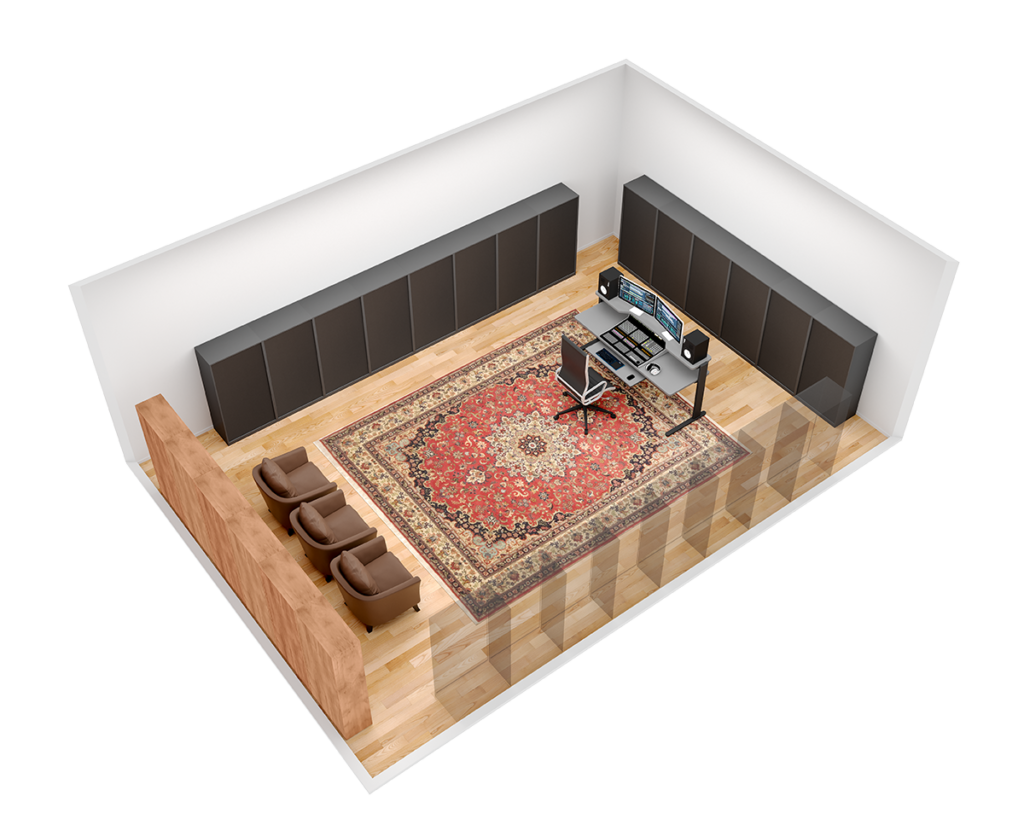
In a mixing room, we can have a two channel mix set up. The most critical wall surface areas within our mix rooms are the front and both sidewalls. These three surface areas must be treated in order to elevate a room to the semi-pro status wher room distortion is addressed. The rear wall must also be treated but if budget and space are an issue one can leave the rear wall go for lower frequency management. The rear wall could be just middle and high frequency absorption technology. All wall surface areas must be treated. in a professional mix room we must treat the ceiling. The floor to ceiling and ceiling to floor reflection must be addressed. Since ceiling heights are the smallest of our room dimensions, this distance produces many axial modal issues that range from 60 Hz. – 90 Hz. This excess energy created by the room’s smallest physical dimension must be addressed with the proper rates and levels of absorption. https://dictionary.apa.org/speech-intelligibility
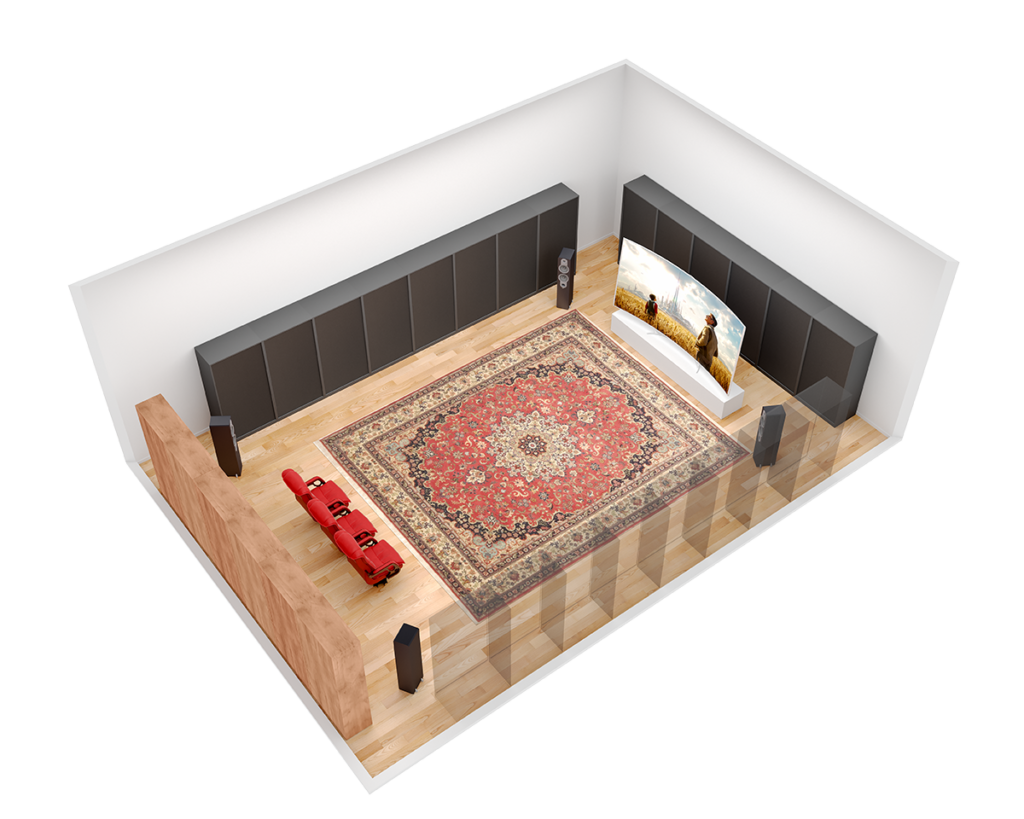
In our Home Theater rooms, we must always as with the other room types mentioned focus on the low-frequency issues first and foremost in any room size and usage. We will need to manage the low frequency issues on the four walls. That will be a minimum requirement that must be met. We can then look at the ceiling to floor issues and decide if we have the space to treat these issues. With multiple channel riggs, we have many full range sources injecting energy into our rooms from all directions, we must cover as many surface areas as budget and space will permit. Diffusion on the ceiling and rear walls of our smaller home theaters must be diffusion. Diffusion will assist with reducing those boundary surface reflections and treat will make our brains think the room is physically larger than its dimensions. If you have never heard diffusion in a theater, you owe it to yourself to do that. It will be worth the effort. Once heard, it is never forgotten.
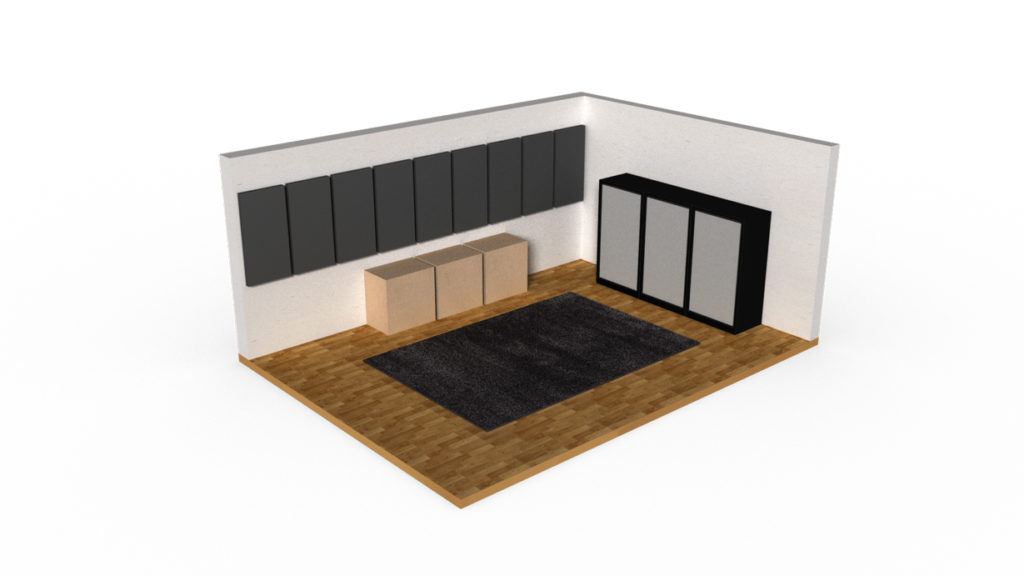
Sometimes it is difficult to get enough surface area coverage on each wall surface of low-frequency absorption. Covering all 4 walls with absorption can take 12- 16″ of space from each wall dimension. It is always better to have some absorption on each wall surface. If you can not treat the complete wall surface area, then you can use our 24″ x 24″ x 12″ d modules that will provide you either the performance of the ACDA-10 or ACDA-12 carbon absorption technology. A single row across the floor wall intersection will provide some surface area coverage and some is always better than none. After budget increases later, one can add additional modules to add more surface area coverage on theat room boundary surface area. People who use this module method have commented that they use the top of the unit as a shelf to put things upon.
At Acoustic Fields we do design work for all critical listening environments. We design two channel listening, home theaters, mix room, and a host of other usages. Our designs include the proper rate and level of absorption for the usage using our CAW system https://www.acousticfields.com/carbon-absorber-wall/. Its critical is all small room designs and all usages to make sure the low -frequency energy is managed to the best of the available space and the existing project budget. We have been in business for 15 years. Read what we are all about. https://www.acousticfields.com/about/


